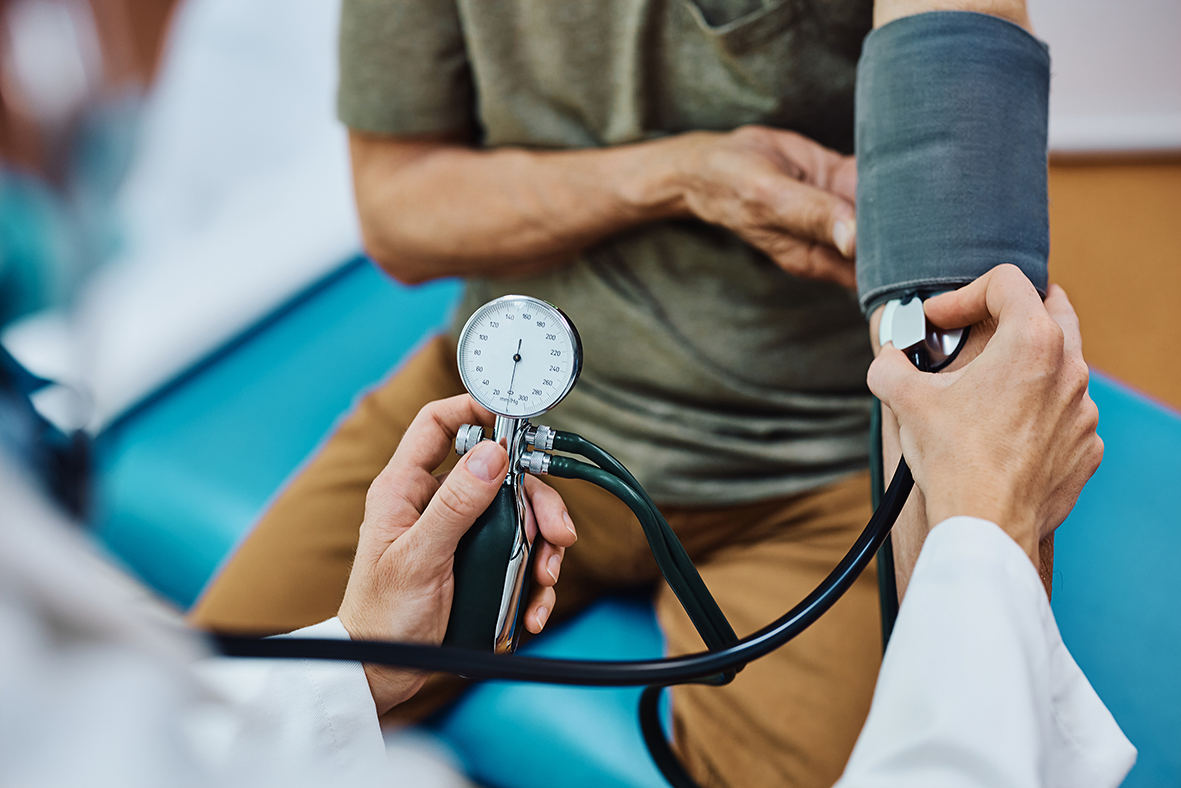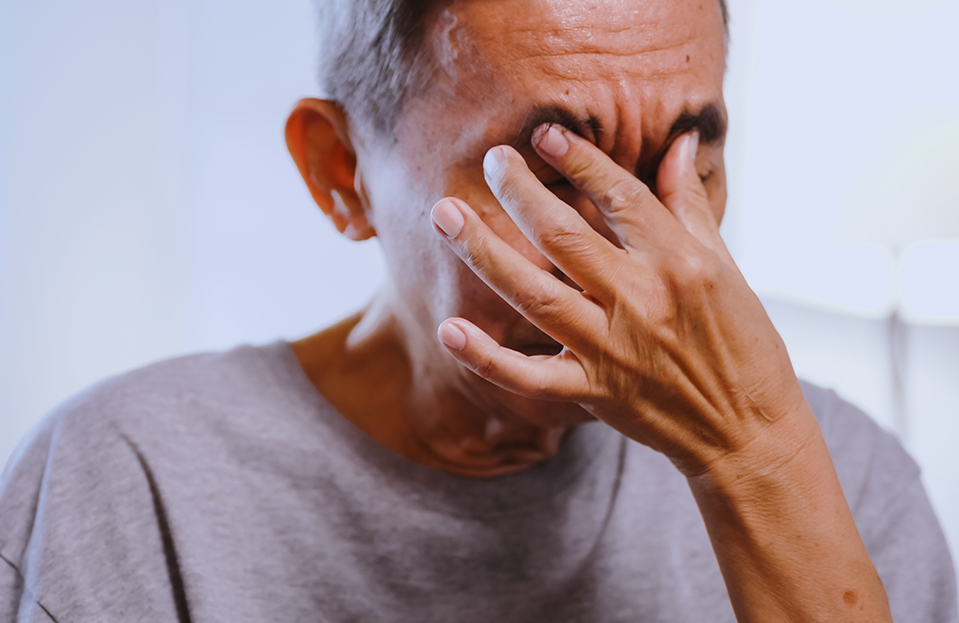Understanding Low Blood Pressure: Symptoms, Causes, and Risks
3 January 2024

Low blood pressure, also known as hypotension, is a condition characterised by abnormally low blood pressure levels. While high blood pressure often takes the spotlight, low blood pressure can also pose health risks. In this article, we will explore the symptoms, causes, and risks associated with low blood pressure, and provide valuable insights on how to manage this condition effectively.



What is Low Blood Pressure?
Low blood pressure occurs when the force of blood against the artery walls is lower than normal. The standard blood pressure reading is around 120/80 mmHg. When blood pressure drops below 90/60 mmHg, it is considered low. However, it’s important to note that what is considered low for one person may be normal for another.
Low Blood Pressure Symptoms
Low blood pressure can cause various symptoms, which may vary from person to person. Common low blood pressure symptoms include:
- Dizziness and lightheadedness: a sudden drop in blood pressure can cause a feeling of dizziness or lightheadedness. This sensation may occur when standing up too quickly or after prolonged periods of sitting or lying down.
- Fainting: in severe cases, low blood pressure can lead to fainting or loss of consciousness. This happens when the brain doesn’t receive enough blood supply due to decreased blood pressure.
- Fatigue: low blood pressure can contribute to feelings of extreme tiredness and lack of energy. The reduced blood flow to vital organs and muscles may result in overall fatigue.
- Blurred vision: insufficient blood flow to the eyes can cause blurred or tunnel vision. This symptom may occur temporarily and resolve once blood pressure normalises.
- Nausea: some individuals with low blood pressure experience nausea or a feeling of queasiness. This symptom can be attributed to inadequate blood supply to the digestive system.
What Causes Low Blood Pressure
Understanding the underlying causes of low blood pressure is crucial for effective management. Several factors can affect of exacerbate low blood pressure, including:
- Dehydration: insufficient fluid intake can lead to low blood volume, resulting in decreased blood pressure. It’s important to stay hydrated by consuming an adequate amount of water throughout the day.
- Medications: certain medications, such as diuretics, beta blockers, and some antidepressants, can cause a drop in blood pressure as a side effect.
- Heart conditions: heart problems, including heart valve conditions, heart attacks, and heart failure, can disrupt the normal blood flow and lead to low blood pressure.
- Endocrine disorders: disorders such as adrenal insufficiency, hypothyroidism, and diabetes can affect blood pressure regulation and contribute to hypotension.
- Pregnancy: blood pressure often decreases during the early stages of pregnancy. While this is normal, it’s important to monitor blood pressure levels closely to ensure they don’t become dangerously low.
Risks and Complications
Although low blood pressure is not always a cause for concern, it can sometimes lead to complications. For instance:
- Reduced organ perfusion: insufficient blood supply to vital organs, such as the brain and heart, can impair their normal function and potentially cause damage if left untreated.
- Increased fall risk: individuals with low blood pressure may be prone to falls and injuries, particularly when transitioning from sitting or lying down to standing up due to the sudden drop in blood pressure. This is known as orthostatic hypotension, and it can increase the risk of falls, especially in older adults.
- Dizziness and fainting: episodes of dizziness and fainting associated with low blood pressure can be dangerous, particularly if they occur while driving or operating heavy machinery. It is important to address the underlying causes of low blood pressure to prevent such incidents.
- Compromised kidney function: insufficient blood flow to the kidneys can affect their ability to filter waste products effectively. Prolonged low blood pressure can lead to kidney damage or even kidney failure in severe cases.
- Cardiovascular complications: Low blood pressure can strain the cardiovascular system and lead to irregular heart rhythms (arrhythmias), angina (chest pain), or even heart attack in individuals with pre-existing heart conditions.
What to Do If Your Blood Pressure Is Too Low
If you experience symptoms of low blood pressure or suspect that your blood pressure is too low, it is essential to take appropriate measures. Here are some steps you can take:
- Stay hydrated: ensure you drink an adequate amount of water throughout the day to maintain healthy blood volume.
- Avoid sudden position changes: when transitioning from sitting or lying down to standing up, do it slowly to allow your body time to adjust and prevent a sudden drop in blood pressure.
- Eat small, frequent meals: consuming smaller meals throughout the day can help prevent a drop in blood pressure after eating.
- Avoid hot environments: heat can cause blood vessels to dilate, leading to a drop in blood pressure. If you are prone to low blood pressure, avoid excessive heat or take necessary precautions when exposed to high temperatures.
- Review your medications: if you suspect that certain medications may be contributing to your low blood pressure, consult with your healthcare provider. They may adjust the dosage or prescribe alternative medications.
- Wear compression stockings: compression stockings can help improve blood flow and prevent blood pooling in the lower extremities, reducing the risk of orthostatic hypotension.
- Discuss with your doctor: if you consistently experience symptoms of low blood pressure or have concerns about your blood pressure readings, consult your healthcare provider. They can evaluate your condition, identify underlying causes, and recommend appropriate treatment options.
When Is Low Blood Pressure Dangerous?
Low blood pressure becomes dangerous when it significantly affects organ function or leads to severe symptoms. While there is no specific threshold for what is considered dangerously low blood pressure, it is crucial to be aware of the warning signs. Seek immediate medical attention if you experience:
- Chest pain: severe chest pain can be a sign of inadequate blood flow to the heart, which may indicate a heart attack.
- Shortness of breath: difficulty breathing or sudden shortness of breath can indicate reduced oxygen supply to the lungs, which requires urgent medical evaluation.
- Severe dizziness or fainting: if you feel lightheaded or faint, especially if accompanied by chest pain or shortness of breath, it could be a sign of a serious medical condition that requires immediate attention.
- Confusion or altered mental state: changes in mental alertness, confusion, or sudden onset of disorientation may indicate inadequate blood supply to the brain and should be evaluated promptly.
Diagnosing Low Blood Pressure
If you suspect that you have low blood pressure or are experiencing symptoms related to it, it is important to consult with a healthcare professional for an accurate diagnosis. During your visit, the healthcare provider will evaluate your medical history, conduct a physical examination, and may perform additional tests. These tests may include:
- Blood pressure measurements: your blood pressure will be measured using a sphygmomanometer, which consists of an inflatable cuff wrapped around your upper arm. This measurement helps determine if your blood pressure falls within the low range.
- Orthostatic blood pressure test: this test involves measuring your blood pressure in different positions, such as lying down, sitting, and standing, to evaluate any significant changes. It helps diagnose orthostatic hypotension.
- Electrocardiogram (ECG): an ECG records the electrical activity of your heart and can detect any abnormalities that may contribute to low blood pressure.
- Blood tests: these tests may be conducted to check for underlying conditions such as anaemia, hypothyroidism, or hormonal imbalances that could contribute to low blood pressure.
Lifestyle Modifications to Manage Low Blood Pressure
In addition to medical interventions, certain lifestyle modifications can help manage low blood pressure effectively. Here are some strategies you can adopt:
- Increase salt intake: consuming a moderate amount of salt can help increase blood volume and raise blood pressure. However, it’s important to consult with a healthcare professional before making significant changes to your salt intake, as excessive sodium consumption can have adverse effects.
- Stay physically active: regular exercise can help improve blood circulation and promote healthy blood pressure levels. Engage in moderate-intensity activities like walking, swimming, or cycling for at least 30 minutes on most days of the week.
- Avoid prolonged standing: if you have low blood pressure, try to avoid standing for long periods. Take breaks, sit down, or move around to prevent blood pooling in your legs.
- Manage stress: chronic stress can affect blood pressure levels. Incorporate stress management techniques such as deep breathing exercises, meditation, or yoga into your daily routine to help maintain healthy blood pressure.
- Avoid alcohol and caffeine: excessive alcohol consumption and caffeinated beverages can contribute to low blood pressure. Limit your intake or avoid them altogether.
- Maintain a healthy weight: obesity can contribute to low blood pressure. Follow a balanced diet, rich in fruits, vegetables, whole grains, and lean proteins, to maintain a healthy weight.
- Stay hydrated: dehydration can lower blood pressure. Drink an adequate amount of water throughout the day to ensure proper hydration.
The effectiveness of lifestyle modifications may vary from person to person. It’s important to consult with a healthcare professional to determine the most suitable strategies for managing your low blood pressure based on your individual needs and medical history.
Be Aware
Low blood pressure, or hypotension, is a condition characterised by abnormally low blood pressure levels. While it may not always be a cause for concern, understanding its symptoms, causes, and potential risks is crucial for maintaining optimal health. Symptoms of low blood pressure can range from dizziness and lightheadedness to fatigue and blurred vision. Several factors can contribute to low blood pressure, including dehydration, medications, heart conditions, and endocrine disorders.
By being aware of the symptoms, understanding the causes, and working closely with healthcare professionals, individuals with low blood pressure can effectively manage their condition and reduce the associated risks. Regular monitoring, adopting healthy lifestyle habits, and seeking medical guidance when needed are key in maintaining optimal blood pressure levels and overall well-being.
You may like these too
“The Hidden Dangers of Varicose Veins: When Ornate Legs Are in Danger”
Discover the unexpected causes, symptoms, and latest varicose vein treatments that can affect your h
24 January 2025
“The Inaudible Burden: How Tinnitus Can Change Your Life”
“Discover the hidden battle against the constant buzz in your ears and learn how to rega
24 January 2025
“Migraine: More than just headaches”
“Discover the hidden causes, effective treatments and tips to overcome the daily battle agains
24 January 2025
How to Lower My High Cholesterol:Tips and Advice for a Healthier Heart
Cholesterol is a common health problem that can lead to serious complications such as cardiovascular
17 April 2024


